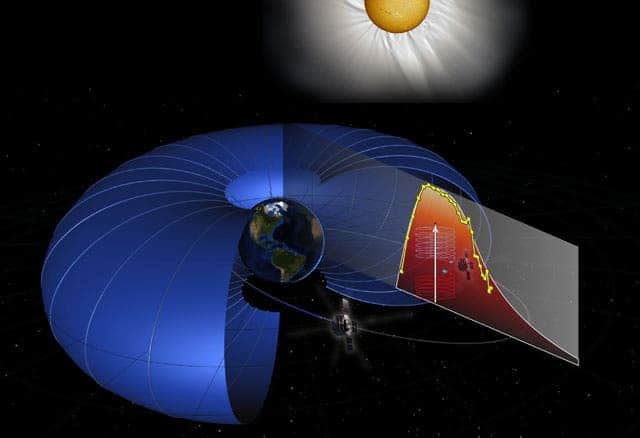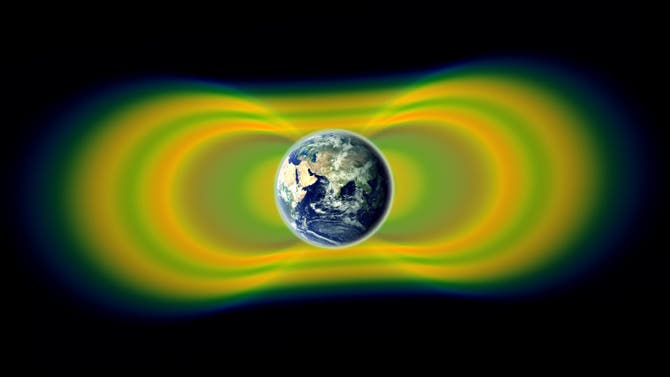
We all appreciate and love the sun’s gaze in the morning, but truth be told were it not for our planet’s protective magnetic fields the sun’s warm embrace would have suddenly turn into a death ray. So instead of scorching Earth, solar wind bounces off the magnetic field, which leads radioactive particles to circulate the planet over a vast area. This area is referred to as the Van Allen belt (not to be confused with the equally cosmic rock band), and was first discovered around the time the first commercial satellites began orbiting Earth and, wouldn’t you know it, these satellites soon began to run haywire. Modern satellites are now equipped with extra shielding to protect vital components and such, but still it’s become essential to properly study and assess the properties and perils the Van Allen belt posses.
Recently, NASA launched two incredibly shielded against cosmic radiation satellites called the Van Allen Probes which infiltrated the doughnut-shaped radiation belt deeper than any other probe before. What they found is something that best resembles a particle accelerator like the Large Hadron Collider at CERN right at the heart of the outer Van Allen belt capable of accelerating electrons at 99.9% of the speed of light.
“Until the 1990s, we thought that the Van Allen belts were pretty well-behaved and changed slowly,” said Geoff Reeves, the first author of the new paper, in a news release. “With more and more measurements, however, we realized how quickly and unpredictably the radiation belts changed. They are basically never in equilibrium, but in a constant state of change.”
“This is like watching a natural particle accelerator in space,” says Geoffrey Reeves, a magnetic field researcher at Los Alamos National Laboratory.
These electrons are the fastest things the Earth creates naturally, but how does this happen? Reeves and colleagues found that electrons in the belt gain their breathtaking velocity by hitching rides on radio waves. When solar radiation hits Earth’s magnetic field, radio waves along with other electromagnetic waves are generated through out the Van Allen belts. Since these waves are at the same frequencies as the vagabond electrons swirling through space at slow speeds, these naturally get vented through and are thus capable of reaching close to the Universe’s speed limit.
The findings could lead to better predictions in the complex chain of events that intensify the radiation belts to the point that they disable satellites, while at the same time offering more hints on how radiation and magnetism interfere with each other. Invaluable information no doubt for when mankind is ready to make the plunge and develop novel spaceships capable of exploring the depth of the solar system or maybe even beyond.
The Van Allen belts are still far from being completely understood though. While we now know how these electrons surf at tremendous speeds, we still don’t know how these radio waves are generated by Earth’s magnetic field. This is definitely something researchers in the future need to address, especially considering the world is becoming ever reliant on communication satellites – satellites which could be fried if an unforeseeable event of some sort, like a huge solar flare, might cause a disturbance in the belt.




